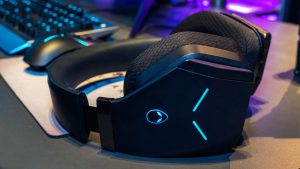Choosing the Right Boom Mic
When it comes to capturing clear and crisp audio, selecting the appropriate boom microphone is crucial. This essential piece of equipment can greatly influence the overall quality of your audio recordings, making it imperative to choose wisely. Here are the key factors to consider when selecting a boom mic for your monopod setup:
- Directionality: Opt for a boom mic with a directional pickup pattern, such as a hypercardioid or shotgun microphone. These types of microphones excel at capturing sound from a specific direction while minimizing background noise, making them ideal for outdoor and dynamic shooting environments.
- Length: Consider the length of the boom mic, ensuring it provides sufficient reach to capture audio from the desired distance. A longer boom mic can be advantageous when recording dialogue or sound effects in various settings.
- Shock Mount Compatibility: Verify that the boom mic is compatible with a shock mount, as this accessory is essential for reducing handling noise and vibrations, resulting in cleaner audio recordings.
- Frequency Response: Look for a boom mic with a broad frequency response to ensure accurate and detailed sound reproduction across various audio sources.
- Build Quality: Prioritize a durable and lightweight boom mic that can withstand outdoor conditions and extended use without compromising performance.
By carefully evaluating these factors, you can narrow down your options and select a boom mic that aligns with your specific recording needs and enhances the overall audio quality of your productions.
Attaching the Shock Mount to the Monopod
Securing the shock mount to your monopod is a critical step in ensuring optimal audio quality and stability during recording sessions. Follow these steps to seamlessly attach the shock mount to your monopod:
- Prepare the Shock Mount: Prior to attachment, ensure that the shock mount is compatible with your boom microphone and can be securely fastened to the monopod. Check for any adapters or mounting accessories required for a proper fit.
- Locate the Mounting Point: Identify the ideal placement for the shock mount on your monopod. The location should allow the boom mic to extend comfortably while maintaining balance and stability.
- Secure the Shock Mount: Utilize the provided mounting hardware or clamps to firmly attach the shock mount to the designated area on the monopod. Ensure that the mount is tightly secured to prevent any unwanted movement or vibrations during recording.
- Adjust for Balance: Once the shock mount is in place, assess the balance of the monopod to prevent any tilting or instability. Make necessary adjustments to evenly distribute the weight of the shock mount and boom mic for a level and secure setup.
By effectively attaching the shock mount to your monopod, you create a stable and reliable foundation for your boom microphone, allowing for smooth and uninterrupted recording sessions. This essential integration sets the stage for seamless audio capture and paves the way for professional-quality results.
Connecting the Boom Mic to the Shock Mount
Once the shock mount is securely in place on your monopod, the next step is to connect the boom microphone to the mount, ensuring a stable and reliable setup for audio recording. Follow these steps to seamlessly attach the boom mic to the shock mount:
- Prepare the Boom Mic: Before attaching the boom mic, ensure that it is properly configured and ready for mounting. Check the microphone’s cable to confirm that it is free from tangles or obstructions that could impede the connection process.
- Align the Mounting Point: Position the boom mic so that it aligns with the shock mount’s attachment point. Carefully guide the microphone’s mounting end toward the shock mount, ensuring a precise fit to prevent any potential slippage or misalignment.
- Secure the Boom Mic: Gently fasten the boom mic to the shock mount, ensuring a snug and secure connection. Use any provided locking mechanisms or tightening features to affix the microphone in place, minimizing the risk of unintended movement or dislodging during recording sessions.
- Manage the Cable: Once the boom mic is attached, carefully route the microphone cable along the monopod, securing it in place with cable clips or Velcro straps to prevent tangling and maintain a tidy appearance. This organized cable management minimizes the risk of interference with the boom mic’s movement and ensures uninterrupted recording sessions.
By methodically connecting the boom mic to the shock mount, you establish a secure and reliable audio capture system that is primed for professional-quality recordings. This seamless integration sets the stage for precise and clear audio reproduction, laying the groundwork for exceptional results in your projects.
Adjusting the Boom Mic Position
Once the boom microphone is securely connected to the shock mount, it’s essential to fine-tune its position to achieve optimal audio capture. Proper positioning plays a pivotal role in capturing clear and balanced sound, making it imperative to adjust the boom mic with precision. Follow these steps to effectively adjust the boom mic’s position:
- Assess the Recording Environment: Take stock of the surrounding environment and the specific sound sources you intend to capture. Consider factors such as ambient noise, desired audio angles, and the proximity of the sound source to the boom mic.
- Extend the Boom Mic: Gradually extend the boom mic to the desired length, ensuring that it offers adequate reach to capture the targeted sound source without appearing in the camera frame or obstructing the scene.
- Angle the Boom Mic: Adjust the angle of the boom mic to align with the sound source, ensuring that the microphone’s pickup pattern effectively captures the desired audio while minimizing unwanted ambient noise and reflections.
- Monitor Audio Levels: As you position the boom mic, monitor the audio levels to gauge the quality of the sound capture. Make adjustments as needed to achieve balanced and clear audio reproduction, ensuring that the recorded sound aligns with your intended creative vision.
- Secure the Position: Once the boom mic is optimally positioned, secure its placement to prevent unintended movement or shifting during recording. Utilize any locking mechanisms or tightening features on the shock mount to maintain the desired orientation and ensure consistent audio capture.
By meticulously adjusting the boom mic’s position, you can optimize the audio capture process, resulting in professional-grade recordings that accurately convey the intended sound sources and ambiance. This meticulous attention to detail sets the stage for exceptional audio quality and elevates the overall impact of your creative projects.
Testing the Setup
Before commencing with your recording session, it’s crucial to thoroughly test the boom mic setup to ensure that all components are functioning optimally and that the audio capture meets your quality standards. Follow these steps to methodically test the setup and make any necessary adjustments:
- Check Audio Levels: Begin by monitoring the audio levels to ensure that the boom mic is capturing sound at an appropriate volume without peaking or distorting. Adjust the microphone’s gain or input levels as needed to achieve a balanced and clear sound signal.
- Test for Background Noise: Assess the setup for any unwanted background noise or interference that may affect the audio quality. Make adjustments to the boom mic’s position or settings to minimize ambient noise and ensure focused sound capture.
- Verify Stability: Confirm that the shock mount and boom mic are securely attached to the monopod and that the setup remains stable during movement or adjustments. Address any instability or vibrations that could compromise the audio recording.
- Perform Sample Recordings: Record sample audio clips to evaluate the overall sound quality and ensure that the boom mic effectively captures the intended sound sources. Listen to the recordings to identify any areas for improvement or refinement in the setup.
- Adjust as Needed: Based on the test recordings, make any necessary adjustments to the boom mic’s position, angle, or settings to enhance the audio capture. Continuously test and refine the setup until you achieve the desired sound quality and clarity.
Thoroughly testing the boom mic setup allows you to address any potential issues or shortcomings before embarking on your actual recording session. This proactive approach ensures that your audio recordings meet professional standards and accurately convey the intended sound sources, setting the stage for successful and impactful creative projects.


